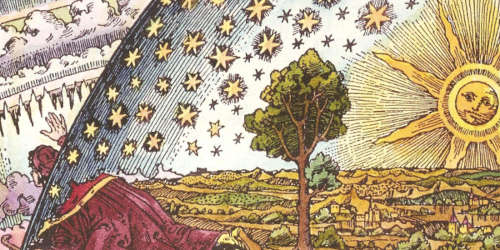As you can see below, Alice A. Bailey had quite a bit to say about Solar Angels. You can use our search engine here to search the writings of Alice A. Bailey. Links on these pages are to Lucis Trust, the home of her writings on the Internet.
By stimulating the egoic bodies of men so that the solar Angels may carry on with greater precision and force their conflict with the lunar gods. This is the true war in heaven. As the solar Gods [cclxxxvi] descend ever nearer to the physical plane, and in their descent assume a steadily increasing control of the lunar natures, the thoughts and desires of men are consequently purified and refined. The solar fires put out the lunar light, and the lower nature is eventually purified and transmuted. In time the solar Angels blaze forth in all their glory through the medium of the lower nature on the physical plane, that lower nature providing fuel to the flames. The hated “Dweller on the Threshold” thus gradually dies for lack of sustenance, and disintegrates for lack of vitality, and man is set free.
A Treatise on Cosmic Fire, 1. The Creation of Thought Forms.
b. At present much of the manipulation of mental matter and its direction into forms of some kind or another emanates from lower levels, and is the result of powerful desire based on physical attraction. The desire bodies, and not the mental bodies of the majority of men are the most powerful, and set up such a strong vibration (due to the force of two groups of lunar lords) that the third group of lunar entities who construct the mental body are swept into a willing response, and the whole threefold lower nature is immediately engaged in the dire process of feeding the dreaded “Dweller.” This direction of energy follows the line of least resistance. One of the primary works of the Ego, as we well know, is to impose a new rhythm upon his shadow and reflection, the lower man, and it is this imposition which in time deflects energy away from man’s distorted creation, and brings his vibration into tune with that of his solar Angel.
A Treatise on Cosmic Fire, 1. The Creation of Thought Forms.


